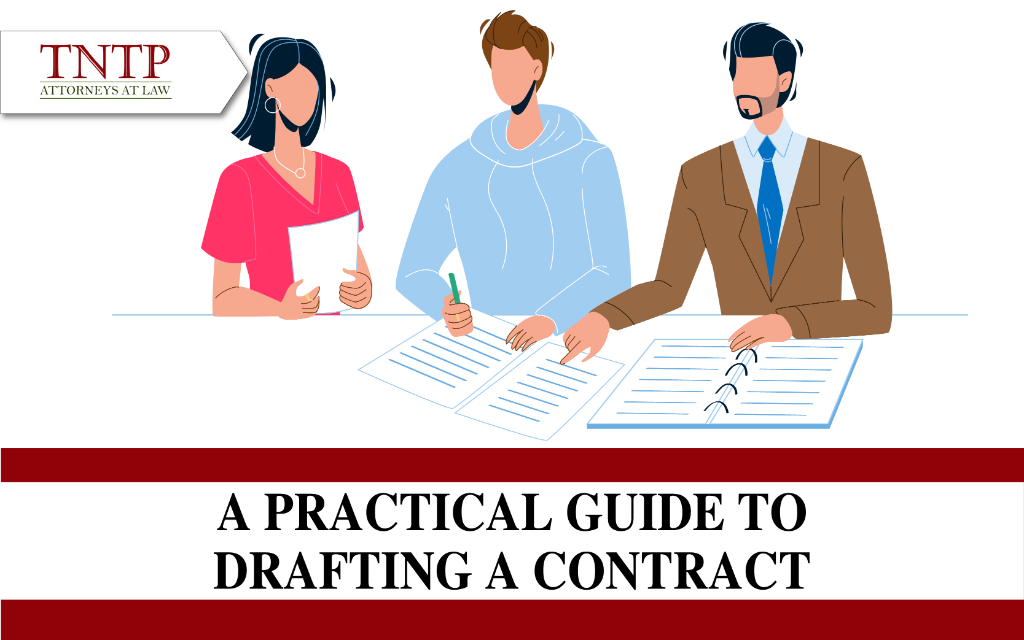A practical guide to drafting a contract

A contract is an agreement between parties to establish, modify, or terminate civil rights and obligations. Contracts include various forms, such as purchase and sale agreements, loan agreements, cooperation agreements, service contracts, and franchise agreements. The content of a contract can vary depending on the parties’ desires, the actual information, and the type of concluded contract. However, when drafting any contract type, the drafter should follow a certain process to anticipate potential risks and ensure that necessary content is not omitted. This article will outline the basic content of the contract drafting process for parties to consider applying.
1. Find out the details to be drafted
A good contract can be implemented in practice. Therefore, before drafting a contract, the drafter must discuss and gather information from the proposer, the person requesting the drafting, or the person directly negotiating, signing, and executing the contract, who understands the drafted content (collectively referred to as “the client”). The information exchanged includes i) information about the client and the other party in the contract; ii) the client’s role in the contract (seller or buyer; service provider or service user, etc.); iii) the client’s overall desires and purposes for the contract and specific requirements in each clause; iv) information about the object of the contract; v) the process of implementing the contract in practice. This information exchange will start when the drafter begins working and ends only when the client agrees with all the content in the contract.
2. Identify the type of drafted contract
After exchanging information and understanding the client’s needs, the drafter will determine the type of contract to be drafted and its characteristics. It is crucial to accurately identify the contract type as each has unique features and specific clauses. Once the type of contract is identified, the drafter can determine the basic contract framework, mandatory clauses, recommended clauses, key clauses, and the overall impact of these clauses on the contract and potential risks.
3. Identify the object of the contract
The object of the contract is what the parties aim to achieve through the contract. For example, in a sales contract, the object is the goods that the seller wishes to sell and the buyer wishes to purchase; in a service contract, the object is the services provided by the supplier to the user. If the object of the contract is not accurately and fully identified, the drafter cannot determine the rights and obligations of the parties involved. The drafter must specify the object of the contract to ensure the contract is executed in accordance with the agreement. The concerns of the parties in a sales contract, for instance, vary depending on the type of goods involved, leading to differences in the contract content. For example, in the case of food products, the buyer often cares about the origin and provenance of the goods; the hygiene and safety of the goods; the methods of preserving the goods; etc. For software products, the buyer typically concerns themselves with intellectual property elements, usage methods, information security, etc.
4. Analyze the legal regulations governing the contract
After determining the type of contract and its object, the drafter must review relevant legal regulations. Through analyzing these regulations, the drafter will recognize issues like the contract’s validity, the rights and obligations of the parties in the relationship, etc. Then, the drafter needs to compare the client’s requirements with legal regulations to determine if these requirements are legally compliant, thereby adjusting them to be in accordance with legal regulations. It is important to note that complying with legal regulations does not mean simply copying all the legal terms into the contract. The drafter must adjust the legal provisions to be in accordance with the actual signing situation of the parties.
We hope this article, “A practical guide to drafting a contract” will be useful to you.
Sincerely,



